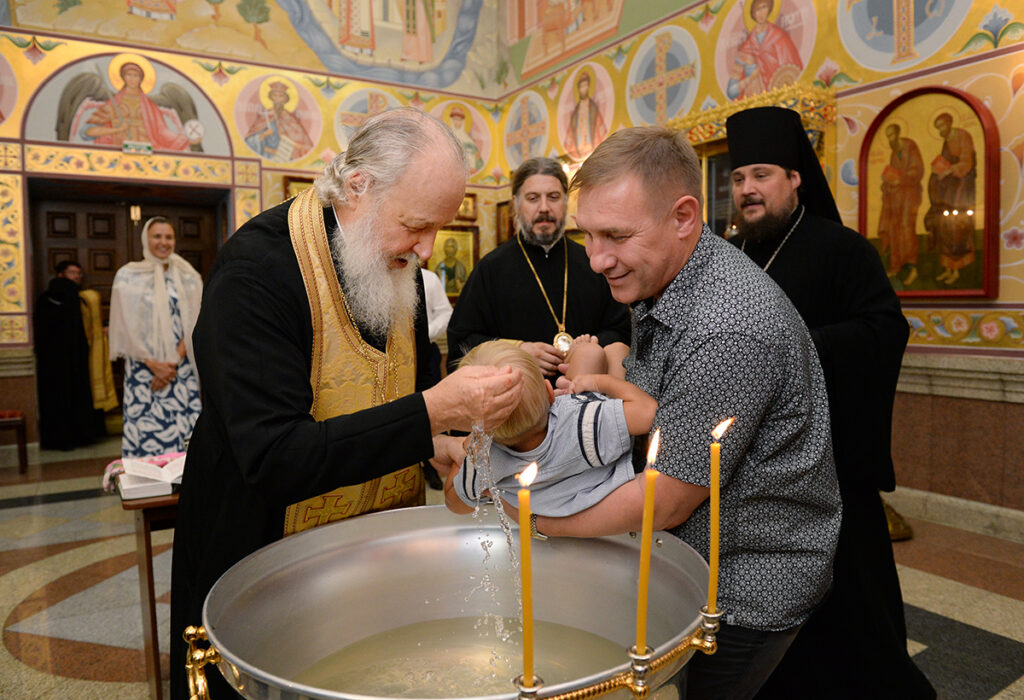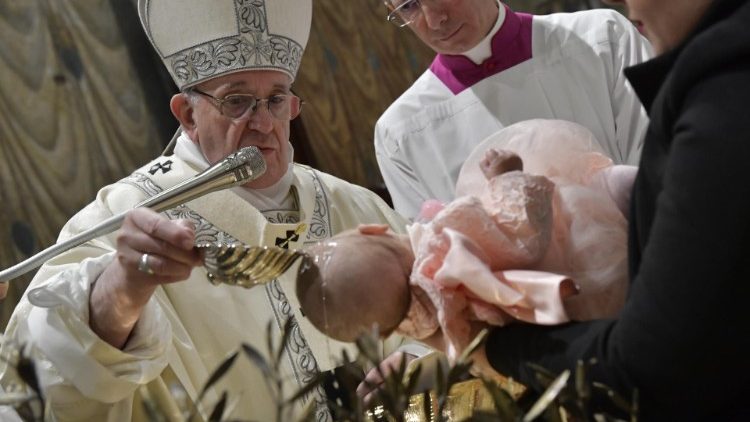Baptism is the cornerstone of Christian initiation, the sacred rite that marks entry into the Body of Christ. Yet, across different Christian traditions, the practice of baptism varies significantly. The Roman Catholic and Eastern Orthodox Churches, despite sharing ancient roots, have developed distinct approaches to this sacrament.
From the method of baptism (immersion vs. pouring) to the age at which it is performed (infants vs. older children), these differences reflect deeper theological perspectives on grace, faith, and the nature of the Church itself.
In this article, we’ll explore the key differences between Catholic and Orthodox baptism—and what they reveal about each tradition’s understanding of salvation.
1. Infant Baptism vs. Believer’s Baptism: When Should Baptism Happen?
Orthodox Practice: Baptism as Early as Possible
In the Orthodox Church, baptism is typically administered to infants—often as early as eight days after birth. This practice stems from the belief that:
Original sin must be cleansed for entry into God’s Kingdom (John 3:5).
Household baptisms in the New Testament (Acts 16:15, 33) imply children were included.
Early Church tradition, as noted by Origen (2nd century), confirms infant baptism as apostolic.
Orthodox theology emphasizes that baptism is not merely a human decision but a work of God’s grace. Parents and godparents vow to raise the child in faith until they can affirm it themselves.
Catholic Practice: A Shift Toward Later Confirmation
While the Catholic Church also baptizes infants, it places greater emphasis on conscious faith through the sacrament of Confirmation (Chrismation in Orthodoxy). Historically, some Catholic theologians argued for delaying baptism until the “age of reason” (7-12 years old). However, current Catholic practice follows:
Infant baptism is standard (usually within weeks of birth).
Confirmation is delayed until adolescence, when the child can personally affirm their faith.
Emergency baptism is permitted (even by laypeople) if a child is in danger of death.
This difference highlights a key theological divide: Is baptism primarily God’s act of grace (Orthodox view) or a covenant requiring personal commitment (some Catholic and Protestant perspectives)?

2. Immersion vs. Pouring: How Is Baptism Performed?
Orthodox Baptism: Full Threefold Immersion
The Orthodox Church insists on triple immersion in water, mirroring:
Christ’s burial and resurrection (Romans 6:4).
Apostolic practice (Acts 8:38-39 describes Philip baptizing the Ethiopian eunuch by going down into the water).
Ancient baptistries, still visible in early Christian sites, were designed for immersion.
The priest baptizes the candidate “in the name of the Father, Son, and Holy Spirit”, emphasizing the Trinity.
Catholic Baptism: Pouring or Sprinkling
While early Christians practiced immersion, the Catholic Church later adopted affusion (pouring) or aspersion (sprinkling) for practical reasons. However:
Immersion is still valid and has seen a revival in some Catholic communities.
The essential requirement is flowing water and the Trinitarian formula.
This shift reflects broader historical changes in Western Christianity, where sacramental efficiency sometimes took precedence over symbolic fullness.

3. Chrismation vs. Confirmation: Sealing the Baptismal Grace
Orthodox Chrismation: Immediate Anointing
Right after baptism, the Orthodox newly baptized (even infants) receive Chrismation—anointing with holy myrrh. This sacrament:
Confers the Holy Spirit (like Pentecost in Acts 8:14-17).
Is performed by a priest, not just a bishop.
Allows immediate participation in the Eucharist, even for babies.
Catholic Confirmation: A Separate Sacrament
In Catholicism:
Confirmation is delayed until adolescence (typically age 7-12).
Only a bishop (or delegated priest) can administer it.
It is seen as completing baptism, strengthening the recipient for mature Christian life.
This separation arose partly because bishops couldn’t attend every baptism in large dioceses. Some Catholic theologians even argued that Confirmation wasn’t strictly necessary for salvation—a view foreign to Orthodoxy.

Conclusion: Two Paths to the Same Grace?
While both Catholic and Orthodox baptisms share the same essence—cleansing from sin and incorporation into Christ—their forms reveal deeper theological distinctions:
| Aspect | Orthodox Baptism | Catholic Baptism |
|---|---|---|
| Age | Infants (8+ days old) | Infants (within weeks) |
| Method | Triple immersion | Pouring or sprinkling |
| Chrismation | Immediately after baptism | Later (Confirmation, 7-12) |
| Minister | Priest | Priest (Baptism), Bishop (Confirmation) |
Ultimately, these differences reflect competing emphases:
Orthodoxy stresses God’s initiative in salvation (baptism as rebirth).
Catholicism emphasizes personal commitment (Confirmation as conscious faith).
Which approach resonates more with you? Do you see baptism primarily as God’s gift or a covenant of faith? Let us know in the comments!

